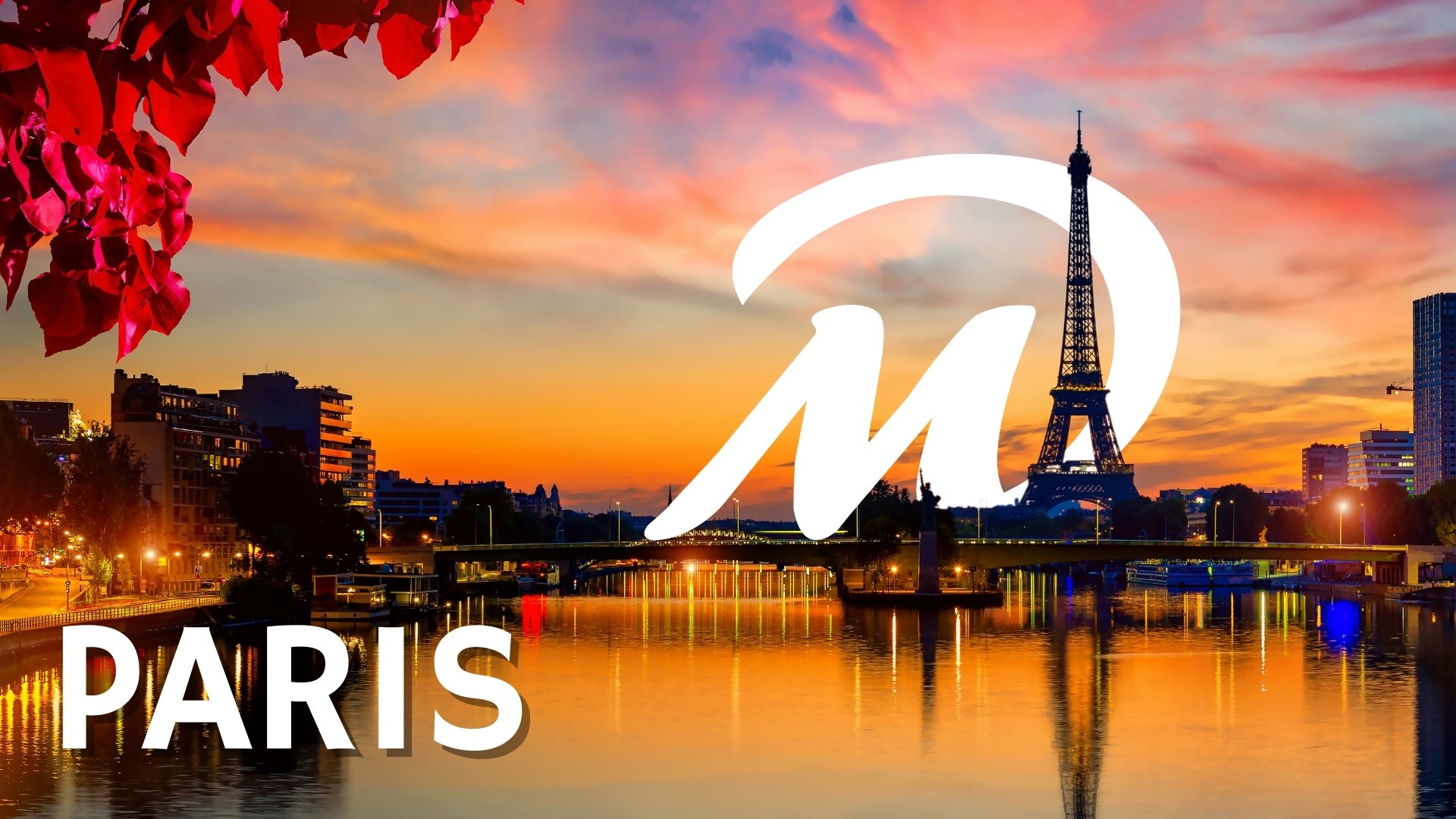Cadiz, the oldest city in the West, is a hidden treasure on the southern coast of Spain, where history, culture and natural beauty live in harmonious coexistence. Founded by the Phoenicians in 1100 BC, it is a living testimony to the various civilisations that have left their mark over the centuries.
Its privileged location, on a narrow strip of land almost completely surrounded by the sea, gives it a unique charm, with fine sandy beaches and a luminous blue sky that enchants all who visit it.
This ancient trading enclave, formerly known as Gadir, was built as a bridge between different cultures and civilisations, from the Phoenicians to the Romans, the Visigoths and the Muslims, to become a vibrant and modern city, without losing its historical essence.
Situated on a small peninsula jutting into the Bay of Cadiz, this city is a compendium of cobbled streets, sunny squares, and an old town that is a living testimony to its rich cultural heritage.
Things todi in Cadiz, a historic Andalusian city with a very long and important history, the oldest western city, founded more than three thousand years ago.
During the visit we will suggest you to visit points such as:
- Cadiz Town Hall.
- Museum of Cadiz.
- Genovés Park.
- Tavira Tower.
And much more. Come and join us.
Table of Contents
- Introduction
- Key places to see in Cádiz:
- – Puerta de Tierra
- – Cadiz Town Hall
- – San Juan de Dios Square
- – Monument to the Constitution of 1812
- – Museum of Cádiz
- – San Antonio Church
- – Genovés Park
- – Santa Catalina Castle
- – La Viña neighbourhood
- – San Felipe Neri Oratory
- – Tavira Tower
- – Central Food Market
- – Topete Square
- – Cathedral
- – Roman Theatre
- Other places to see in Cádiz
- Most important towns to see in Cádiz
Things to do in cadiz: Key places to visit
– Puerta de Tierra
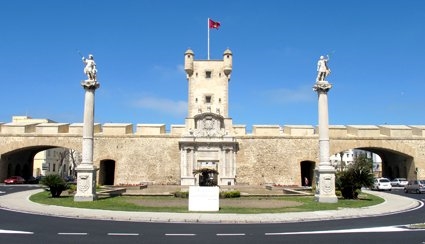
The Puerta de Tierra is an architectural monument part of the things to do in Cadiz and is a remnant of what was once the entrance wall to the city of Cádiz. Built by the academicist architect Torcuato Cayón in the 18th century, the façade is carved in marble and is conceived more as a religious altarpiece than as a military fortification.
Looking for things to do in Cadiz? Start here!
– Cádiz Town Hall
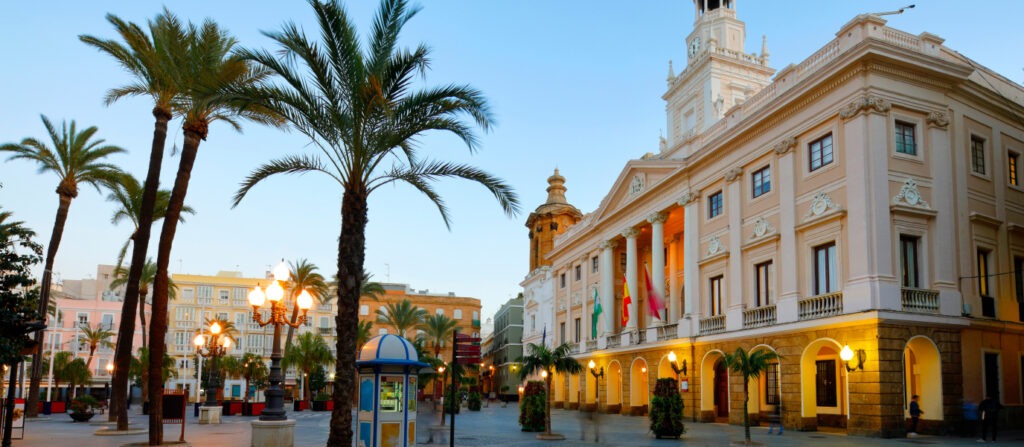
Originally, the City Hall of Cádiz was located in the well-known Pópulo neighbourhood, within the walled enclosure of the city. It has now stood on the same site since the 17th century.
The building a great visit, dates from 1799 and was renovated and replaced by the current one.
It is among the things to do in Cadiz that gives the sensation of being elevated, due to the difference in the colour of the stone of the arcades that welcome you inside and the upper façade, white and neoclassical in style, which simulates a parthenon in its centre. A tower crowns this building which, at night, is especially beautiful because of its illumination, its clock glows white in the dark while its edge and its hours are highlighted by the golden colour that adorns it.
Check our complete guide to the best things to do in Cadiz.
– Plaza San Juan de Dios

The primitive Plaza Mayor, which was also called La Corredera, was located, as was common in medieval cities, outside the city walls and close to one of the access gates, in this case the primitive Puerta del Mar, today known as Arco del Pópulo.
Its irregular layout is conditioned by the fact that it coincides with one of the mouths of the old arm of the sea, which originally crossed what is now the island of Cádiz.
In the 16th century it had already become the centre of urban activity, open to the port and presided over by the municipal council.
Its traditional commercial function increased as American trade grew, as many exotic products brought to the city by the Indian fleets were offered for sale here. At the end of the 18th century, the construction of fixed stalls was ordered, which gave the complex the character of a public market, which was maintained until the Central Market was inaugurated.
In the Plaza de San Juan de Dios square, there are other interesting buildings such as the Town Hall, the church of San Juan de Dios and the Casa de los Pazos Miranda.
– Monument to the Constitution of 1812
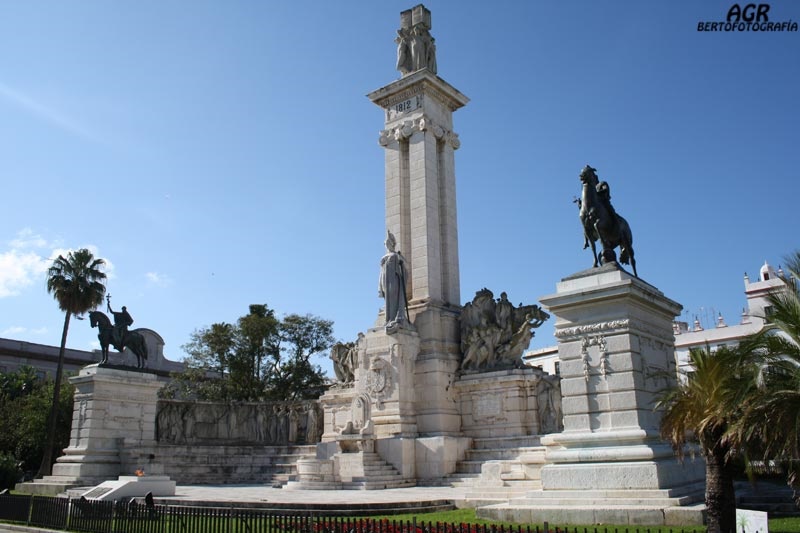
One of the essential things to do in Cadiz is undoubtedly visiting the monument to Constitution.
The deputies of the Cortes de Cádiz, aware of the importance of the document they had drafted, proposed building a monument to perpetuate its memory. It took more than a century to get the idea off the ground, and the occasion arose on the occasion of the celebration of the first centenary of the Constitution.
The monument was conceived as a large hemicycle, with a tall obelisk-shaped pillar in the central area, and its entire iconographic repertoire was conceived as a tribute to the work of the Cortes. In the centre of the hemicycle is a throne with the insignia of the Bourbon family symbolising the legitimacy of Ferdinand VII. In front of this, there is a tribune that serves as a base for the obelisk of the Constitution, identified with Justice.
The two bronze equestrian figures, symbolising war and peace, frame the ensemble and on either side of the central pillar there are sculptural groups dedicated to the citizens marching towards war and the fruits of peace. In the rear area, the ensemble is completed with the figure of Hercules, representative of the city of Cadiz, together with other iconographic elements and inscriptions that recall the deputies and the American dimension of the representation.
– Museum of Cádiz
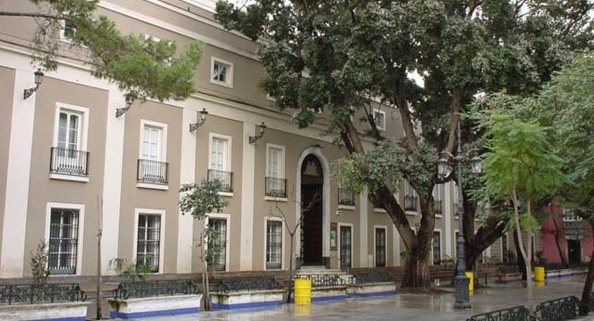
The origin of the museum begins with Mendizábal’s Disentailment (law of expropriation of the clergy’s property) in 1835 and the deposit, in the city’s Academy of Fine Arts, of a series of paintings from various secularised convents.
Meanwhile, throughout the 19th century, a series of works from the flourishing Cadiz school of painting began to be collected around the Academy of Fine Arts, with the last reminiscences of neoclassicism, romanticism, genre painting and the framework of history.
The accidental discovery in 1887 of the male Phoenician anthropoid sarcophagus in the grounds of the current Cádiz shipyard marked the starting point of the archaeological collection. The Archaeology section of the museum is divided into rooms, inside which the evolution of the province of Cadiz is exhibited, from prehistoric times, through Phoenician-Punic Gadir, to the Roman Gades and Baelo Claudia.
In this section, in addition to the suggestive Phoenician anthropoid sarcophagi, the funerary objects and Punic and Phoenician trousseaus recovered and in the sanctuary of Melkart – Ercole (Sancti Petri and in the Villa de Doña Blanca) as well as the original Roman remains of Cádiz, Medina Sidonia, Sancti Petri and Baelo Claudia stand out for their use.
The Fine Arts section of the things to do in Cádiz is also divided into rooms and involves a journey through painting from the 16th century to the present day. These include 16th-century Flemish and Spanish works, works by Zurbarán for the Charterhouse of Jerez between 1637 and 1639, several paintings by Murillo and his disciples from the Baroque collection, and a painting by Joan Miró in the Contemporary Art section. Miró in the Contemporary Art section.
Discover our top picks for things to do in Cadiz.
– Church of San Antonio
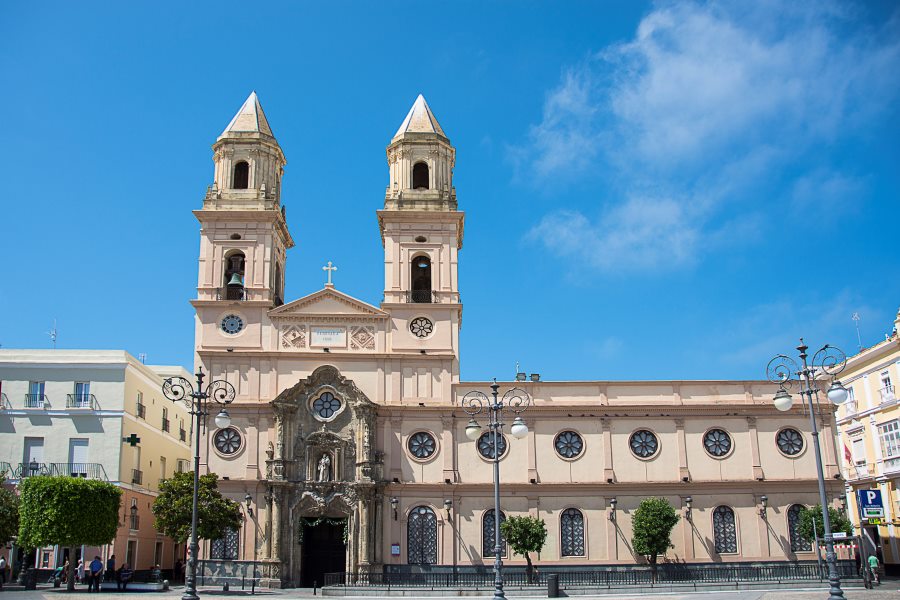
This visit to the church, part of the things to do in Cadiz has its origins in a chapel that existed in the same place, which was then called Campo de la Jara. The current building was inaugurated in 1669, although it has undergone several alterations in later times, the largest construction being built in the 19th century.
The main façade, which opens onto the square of the same name, is very impressive due to the presence of tall towers that frame it, and generally corresponds to the reform of 1858. In the centre there is an interesting Baroque façade, carved in sandstone, dating from around 1730, divided into two sections supported by Corinthian columns in the first section and twisted in the second. In the entrance hall there is a marble image of Saint Anthony. The structure is profusely decorated and is an original work of Cádiz Baroque.
The main altarpiece is a 19th century academic style work by Manuel García del Álamo. The body is divided into three bands by Corinthian columns, in the main one is the image of the Virgen del Patrocinio and on the sides San Antonio and San Francisco de Paula.
Inside you can also find the altarpiece belonging to the Brotherhood of the Cristo de la Columna, a remarkable polychrome wooden sculpture signed by Jacinto Pimentel in 1660. The column is a Mexican silver work made in the second half of the 17th century.
It is a essential part of the things to do in Mahón
– Genovés Park
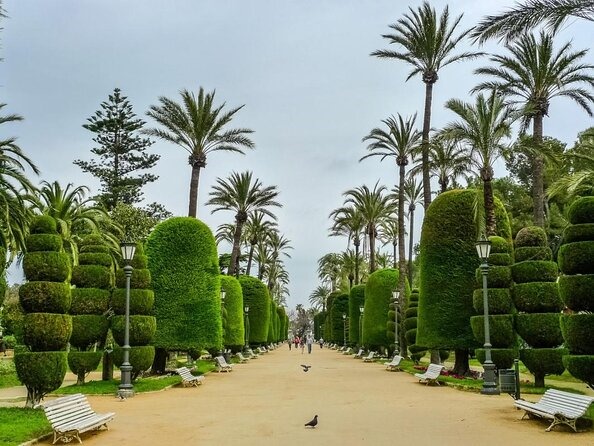
The area where the largest green area in the historic centre is located was excluded from the urban growth that the city experienced during the 18th century because it was subject to military servitude. At that time it was already being used as a recreational area and was known by the name of Paseo del Perejil, due to its sparse and poor vegetation.
In the middle of the 19th century a long tree-lined avenue was created (things to do in Cadiz), known as Las Delicias, which led to a garden and later, in 1892, the mayor Eduardo Genovés commissioned the definitive remodelling, consolidating its romantic appearance and the current layout.
The park conserves interesting species of different origins, which transform it into a true Botanical Garden and houses a series of small monuments, among which those in honour of José Celestino Mutis and José María Permán stand out, as well as the famous fountain of the Children of Umbrellas.
– Santa Catalina Castle
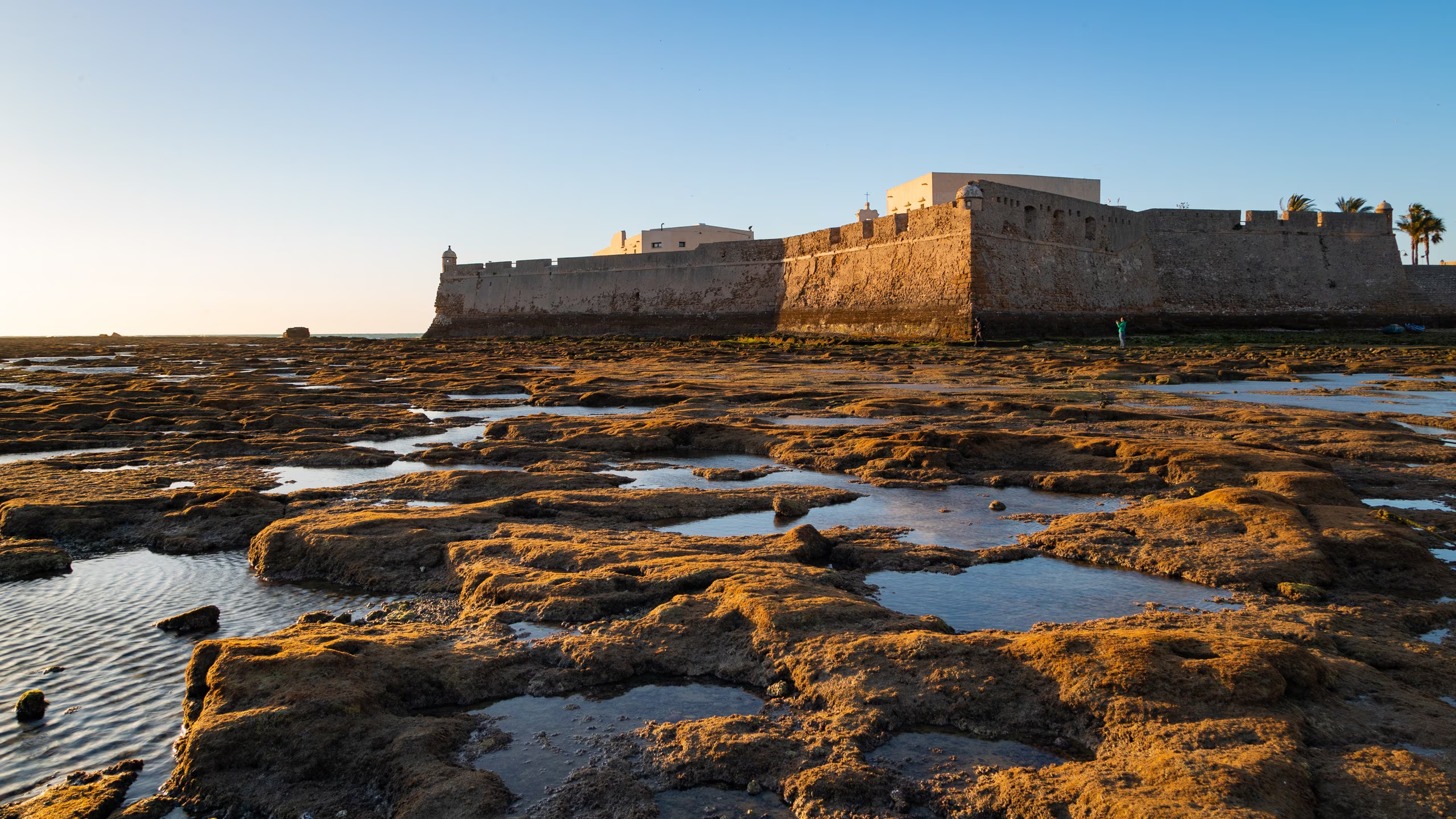
After the Anglo-Dutch sack of the city in 1596, King Philip II sent the engineer Cristóbal de Rojas to Cádiz to carry out a defence project; Rojas considered that the most immediate intervention was to build a fortification in the bay of Santa Catalina, to defend one of the most vulnerable fronts of the maritime frontiers.
The castle is a top among the things to do in Cádiz and an important example of the military architecture of the Modern Age and has survived to the present day without major changes. It has a star-shaped plan with two well-defined fronts: one formed by triangular bastions resting on the beach and the other open towards the city, where the only gate in the enclosure is located, protected by two bastions and a ditch, which regulated the water level by means of locks. An access bridge to the single gate, protected by an upper guardhouse, under which there is a commemorative plaque commemorating the completion of the works, during the reign of Philip II.
Today, this fortress has been transformed into a great multi-purpose cultural and leisure space being part of the things to do in Cadiz.
– La Viña neighbourhood
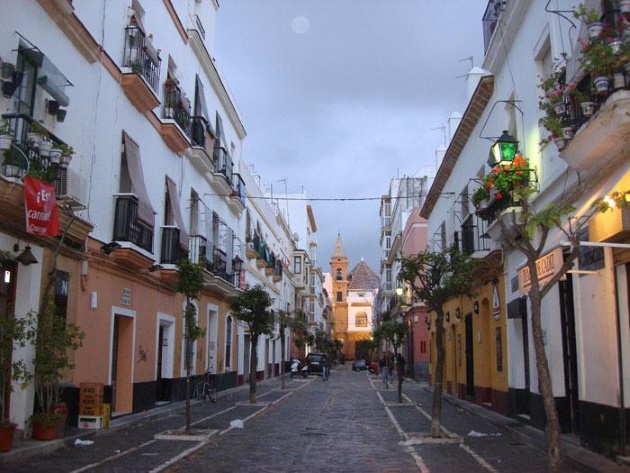
La Viña is a neighbourhood in the historic centre of Cádiz, delimited by the streets of La Rosa and Sagasta, which separate it from the neighbourhoods of El Ballo and San Juan respectively.
Its name comes from the fact that this area was formerly a vine-growing area, but from the 18th century onwards and as a consequence of the strong demographic increase experienced in the city as a result of the boom in trade with America, this area began to be built up. Due to its location and remoteness from the city’s port, it did not arouse the interest of the shippers from the Indies, so it was inhabited by the working classes who depended on the fishing activity of the Caleta beach (things to do in Cadiz).
In summer these streets are filled with visitors and tourists sitting on the terraces tasting one of the typical dishes of Cadiz gastronomy: Mackerel with “piriñaca” (a mince made up of tomato, green pepper and onion, all washed down with a good splash of virgin olive oil and a little bit of sherry vinegar).
Discover the top-rated things to do in Cadiz today.
– San Felipe Neri Oratory
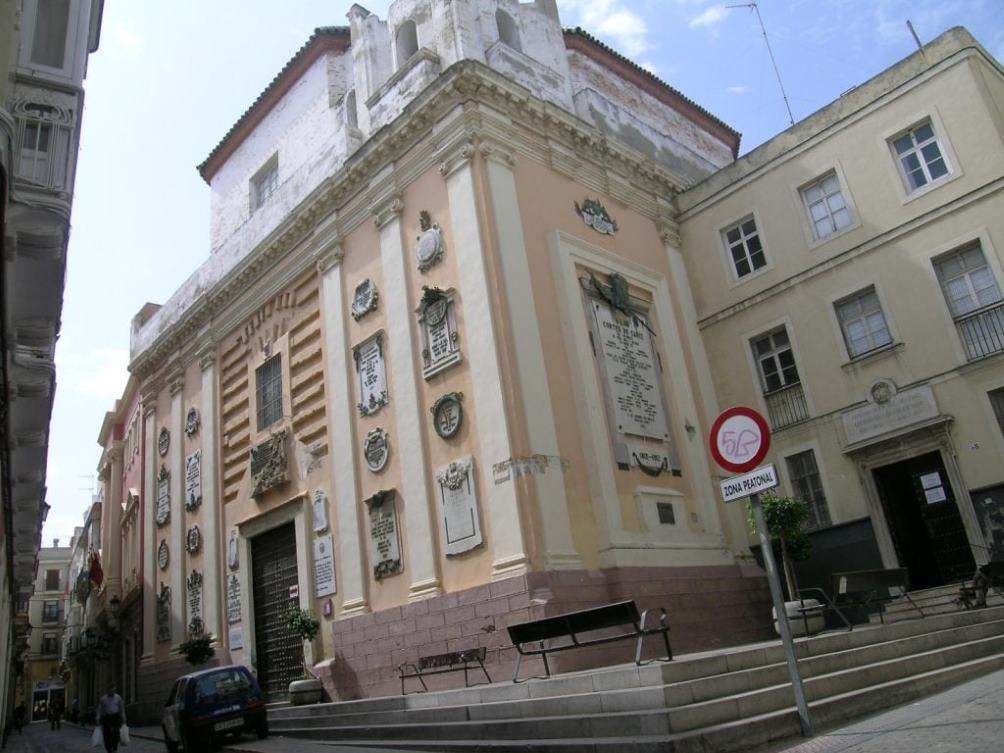
This temple belonged to the old oratory of the Philippians, was built in 1688 according to the plans of the builder (architect) Blas Díaz, and was inaugurated in 1719. Subsequently, in 1764, the roof was rebuilt due to the damage suffered by the tsunami of 1755. In addition to its artistic interest, it also has a special historical significance as the seat of the Cortes (national assembly) that drafted the first Spanish Constitution in 1812.
The exterior area of the temple is articulated by Ionic pilasters, among which there are numerous tombstones dedicated to the Donatist deputies (name given to those belonging to the liberal current in favour of the constitution) and which were placed in this place especially in 1912, to celebrate the centenary of the Cortes of Cadiz.
The Oratory has an elliptical floor plan, around which there are seven rectangular chapels, covered with barrel vaults and richly decorated. Among these, the Sagrario chapel stands out, with a particular 18th-century Baroque altarpiece of Italian origin in coloured marble and presided over by a polychrome wooden crucifix, also of Italian origin.
– Tavira Tower
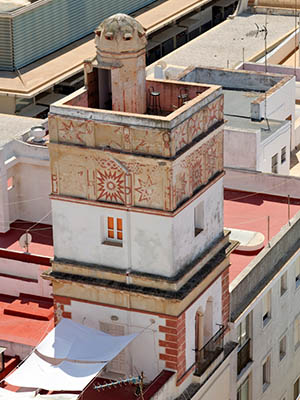
The history of the Tavir Tower is fascinating. It is the most prominent lookout tower of the things to do in Cadiz. It is named after its first lookout, the frigate lieutenant Antonio Tavira. Built in the mid-18th century, it is Baroque in style and forms part of the Palace of the Marquises of Recaño.
Rectangular in shape, three storeys high and with a double façade facing the street, it is located on the highest point in the city, 45 metres above sea level. For this reason it was designated the official watchtower of the Port of Cádiz in 1778. In this way, it controlled the entry and exit of ships into the bay and the port. For all these reasons, the Tower was witness to the trade and prosperity enjoyed by the city in its “golden century“.
The Tavira Tower with the Gorda Tower and the Alta Tower in San Fernando, were the watchtowers that were used to warn of the main maritime movements by means of a system of flag signals.
– Central Market
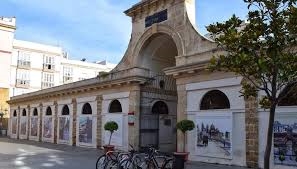
The project for the Central Market was the work of Torcuato Benjumeda, who proposed a neoclassical square in the form of an arcaded square, located on the site of the market garden of the convent of Los Descalzos, now Plaza de la Libertad, which was disentailed in the 1830s. The historic market in the Plaza de la Libertad was inaugurated in 1838 and for a century hardly any alterations were undertaken.
In 1928 , a reform of the complex was planned, promoted by Mayor Ramón de Carranza, which led to the construction of the pavilion that occupies the central space.
Recently renovated, it is the most historic and functional monument part of the things to do in Cadiz, and it is here that cameras and shopping trolleys coexist in perfect harmony, as well as tourists from the most colourful cities and the most local housewives of Cadiz.
This is where you have to come if you want to buy the best and freshest meats, fruits, fish and seafood while visiting a beautiful monument of the city.
– Topete Square
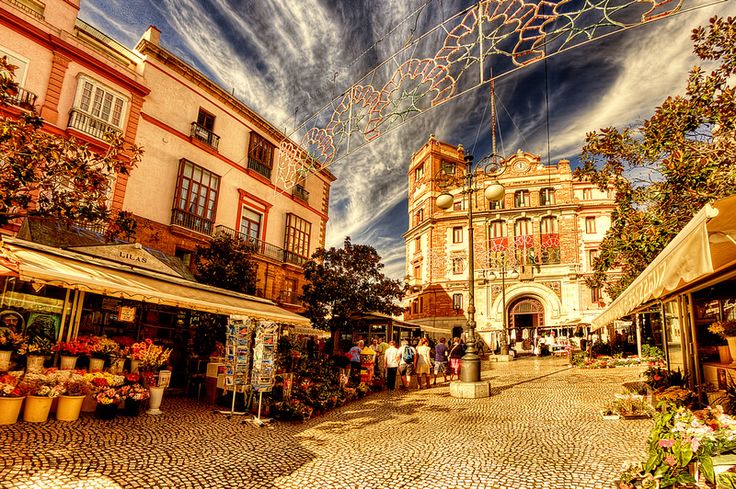
The reason why it is known as Plaza de las Flores (its name is Plaza Topete) can be understood as soon as you enter from one of the streets that lead off from it, including the shopping street Calle Columela.
From a distance, the colourful bloom of the flowers, which are scattered around a few kiosks, begins to enliven the passers-by. Moreover, as it is located in the heart of the historic centre, you are sure to pass by it.
In this square there are not only kiosks with flowers, but also very special buildings such as the Correos y Telégrafos, which was built in 1930 on the site of the former Convento de los Descalzos (Convent of the Barefoot Friars).
It is visit is a very beautiful building among the things to do in Cadiz where the red and white decorative bricks and the glazed ceramics are striking.
It is still in operation and you can go inside if you want to send a postcard, for example. This place is also well known because during the Carnival festivities, groups stand at its door to sing their ironic pieces.
In the same square it is also interesting to see the building located at number 1 of Plaza Topete. It was erected in 1746 and its façade framed by a pilaster shows the typical features of the Cádiz baroque style. At number 12 is another building, in this case neoclassical and with large pilasters on the upper floor.
– The Cathedral
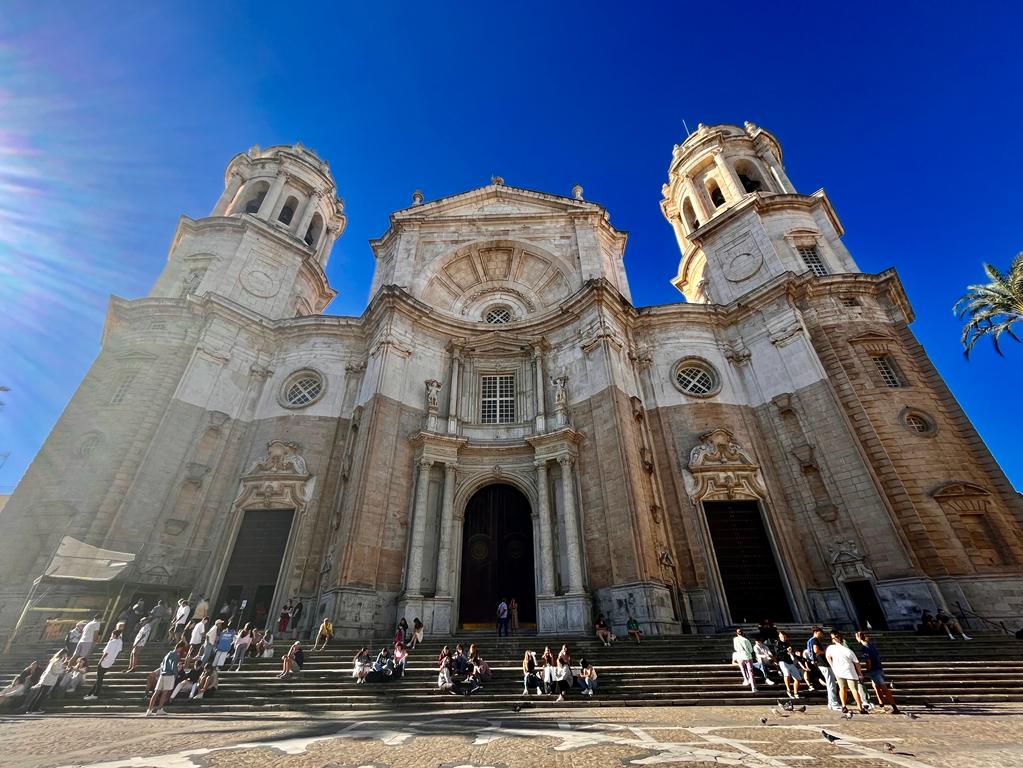
The Cathedral, among the top things to do in Cadiz, is also known as “Santa Cruz sobre el mar” or ” Santa Cruz sobre las Aguas”, is referred to by locals as the New Cathedral. This distinguishes it from the Old Cathedral, built in the 16th century on the remains of an earlier Gothic structure commissioned by Alfonso X the Wise.
The original Gothic cathedral underwent several modifications in the 15th and 16th centuries and was destroyed in 1596 during an attack by the Anglo-Dutch squadron led by Admiral Howard and the Earl of Essex. In its place, a new church was erected in the Mannerist style with Tuscan columns.
During the 17th century, the cathedral was enriched with new chapels and works of art. In the 18th century, the prosperity derived from trade with the Indies and the transfer of the Casa de Contratación from Seville to Cadiz in 1717 prompted the construction of a new cathedral to reflect the splendour of the city.
Work began in 1722 and continued until 1838, going through several phases and changes in architectural style under the direction of various architects. The cathedral evolved from the early baroque to a neoclassical finish on its façade, towers, domes and interior, marking 116 years of construction and reflecting the changing tastes and styles of the time.
– Roman Theatre
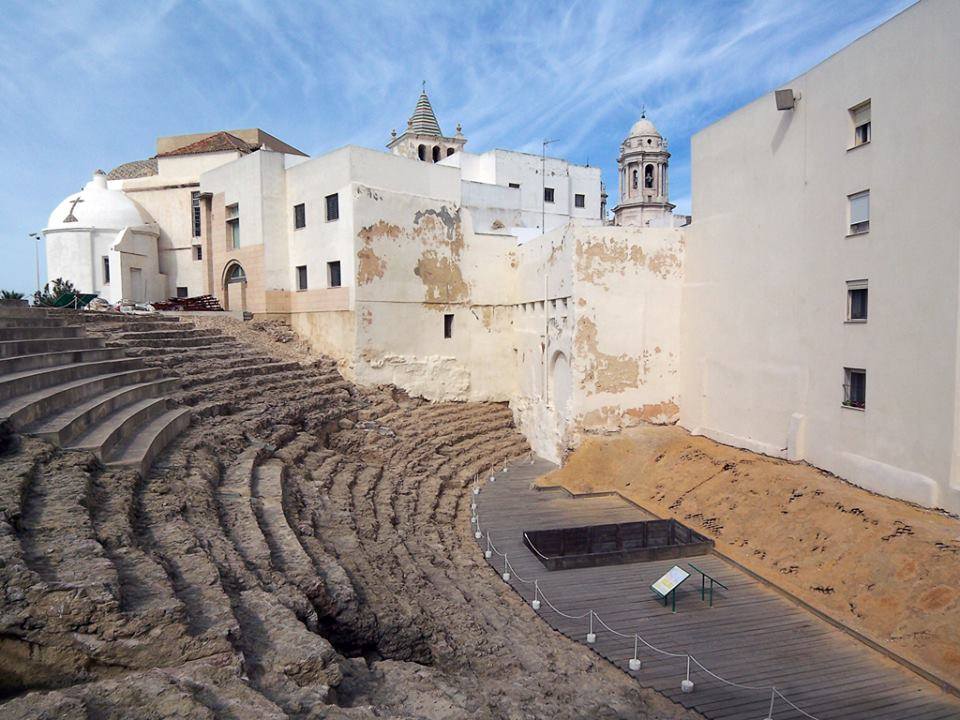
The Roman Theatre, over the best things to do in Cadiz, was built around 70 BC when the Gaditan Lucius Cornelius Balbus “the Elder”, friend and advisor to Julius Caesar, decided, together with his nephew, to extend the limits of the city of Gades, building the Necropolis. In this new district an amphitheatre and a theatre were built, the latter located in 1980 under the present district of El Pópulo.
Dive into the unique and fun things to do in Cadiz.
The building was abandoned in the 3rd century AD and sacked in the following century, although the remains of its imposing structure were used as warehouses, stables and houses until the Middle Ages. It was also used as an Islamic fortress, mentioned in sources of the time as “Castillo del Teatro” (Theatre Castle), later rebuilt by Alfonso X “the Wise” after the conquest of the city.
Excavations have brought to light a part of the theatre, which can be considered the oldest and one of the largest in the Iberian Peninsula. Its structure has very archaic features, with a horseshoe-shaped cavea and parabolic steps. Under the steps is a large distribution gallery, covered by a ring-shaped barrel vault. The cavea was built into the slope of the land and the construction of the gallery required the cutting of the natural rock, while the outer wall was built with perfectly cut stones, on which the rooms leading to the steps open up.
The most monumental part of the structure, the scene and the portico, which opened to the rear, has not been excavated and its ruins are still hidden under the neighbourhood of El Pópulo.
Other Things to do in Cadiz
- Enjoy a play at Falla Theatre
- Swim at La Caleta Beach
- Walk by the Seafront Promenade
- Visit the neighbourhood “El Pomulo”
Most important Things to do in Cadiz
Apart from visiting the Capital, there are many other things to do in Cadiz such as visiting towns like:
- Jerez de la Frontera
- Vejer de la Frontera
- Tarifa
- Zahara de los Atunes
- Barbate
Remember that with DareMapp you can make a multitude of guided tours in an interactive way, a fun tourism for the main destinations.
what better way than travelling and discovering while learning in a fun way? Visit our blog to discover other guided tours.
Visit our social networks and discover more things to do in Cadiz (and in other cities), plus lots of tourism tips.
Remember that with DareMapp you can take a multitude of guided tours in an interactive way, including many of these “Spain’s most famous routes” for fun sightseeing in the main destinations.
What better way than to travel and discover while learning in a fun way?



